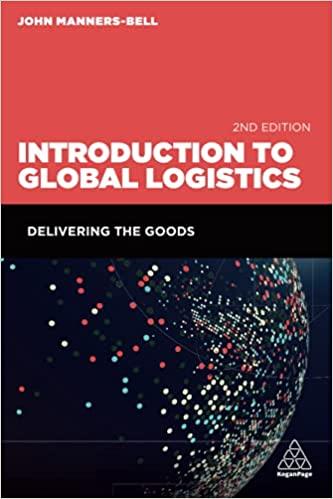Question
Can someone help with the decision tree, please? BACKYARD PIZZA OVENS: MANUFACTURE OR OUTSOURCE? According to Business Insider, May 6, 2023, The trendiest thing that
Can someone help with the decision tree, please?
BACKYARD PIZZA OVENS: MANUFACTURE OR OUTSOURCE? According to Business Insider, May 6, 2023, The trendiest thing that adds value to your home and livens up your summer BBQ: a pizza oven. Thanks to rapid cooking, versatility, and ease, backyard pizza ovens are a growing trend with a twist on the classic barbecue experience. Fresco produces large outdoor home pizza ovens (p-ovens) designed for the high-end backyard kitchens included as an alternate or addition to the traditional BBQ grill. For the past ten years, Fresco outsourced their manufacturing process to a manufacturer in China. Despite the global supply chain that Fresco has developed, they are considering if they should vertically integrate into manufacturing and produce the p-ovens themselves. In the p-oven industry, most manufacturing has been taking place in Asian countries, where there is significant low-cost labor available to produce the products. However, many of these companies are looking to relocate to the Western hemisphere. As a result, Fresco is considering setting up their own in-house production facility in Mexico. However, they are not ruling out the option to continue to outsource manufacturing (in China). Given their current supplier in China, they would not need to pay any fixed cost but would have to guarantee to purchase 35K units for $840 each. If they decided to produce the p-ovens themselves in Mexico, they would have an estimated fixed cost of approximately $11 million dollars including mortgage, machinery, overhead and fixed labor costs. The unit cost to manufacture each p-oven would be $625. The selling price of the Fresco p-ovens would be $1345 each. One of their main concerns is regarding demand. If demand is strong, the number of p-ovens they can sell is uniformly distributed between 25K and 55K. If demand is weak, the number of p-ovens they can sell is uniformly distributed between 10K and 30K. There is a 70% chance that demand will be strong. If Fresco chooses to continue to outsource and the demand is greater than the 35K, they can only sell the 35K p-ovens that they purchased. If demand is less than the 35K p-ovens, they will only earn revenue on the amount demanded even though they must purchase the full 35K p-ovens from their vendor. If Fresco chooses to manufacture the p-ovens themselves, they can produce an initial 15K p-ovens and then will have the option to run a second production run of anywhere between 0 and 40K additional p-ovens in response to market conditions. The timing of the second production run would be shortly after Fresco learns if the market will be weak or strong. Thus, the total quantity that Fresco can produce will vary between 15K and 55K p-ovens thats a 15K minimum from the first production run plus anywhere from 0 to 40K units for the second run. Once again, given that demand varies, if Fresco produces more p-ovens than the demand, it will only be able to collect revenue from the p-ovens sold and if the demand is greater than the number of p-
ovens produced (after the second production run), Fresco can only sell the number of p-ovens produced. Use this information, to advise Fresco on their decision. Prepare an Executive Summary report (approximately 1 to 2 pages (plus appendices) and include the following sections) that summarizes your findings and recommendations. Be sure to include the following in your report: 1. (10 points) Case Synopsis (include a brief summary of the case and the business issue(s)being studied) 2. (50 points) Methodology (including a discussion of what information was provided and how you used this information to analyze the problem) (a) Organize the available data on cost, revenue, and probability estimates in a table. (b) Set up a decision tree to model the scenario presented to Fresco. I want to see two versions of your decision tree. i. First, show the tree with the algebraic formulations as your payoffs before you run the simulations see the examples in the lecture notes (eg. from FOOZ lecture example = $250*MIN(D, Q) - $150000 - $130Q) ii. Second (completed after step (c)), after running simulations and optimization, show the decision tree with your payoffs (average profit calculated from the four simulations). Show your solved decision tree
CWID: 2345
Step by Step Solution
There are 3 Steps involved in it
Step: 1

Get Instant Access to Expert-Tailored Solutions
See step-by-step solutions with expert insights and AI powered tools for academic success
Step: 2

Step: 3

Ace Your Homework with AI
Get the answers you need in no time with our AI-driven, step-by-step assistance
Get Started


